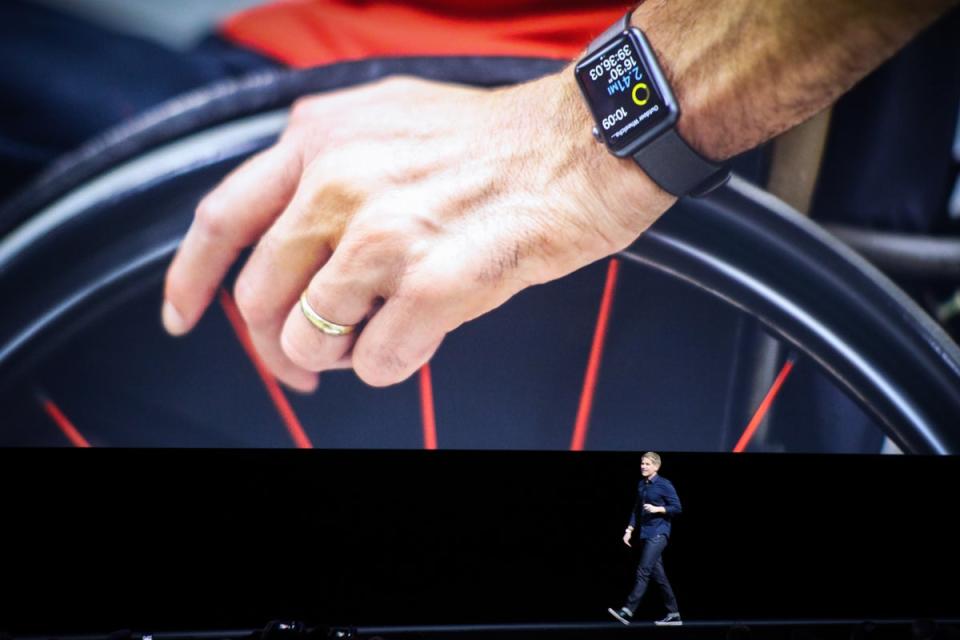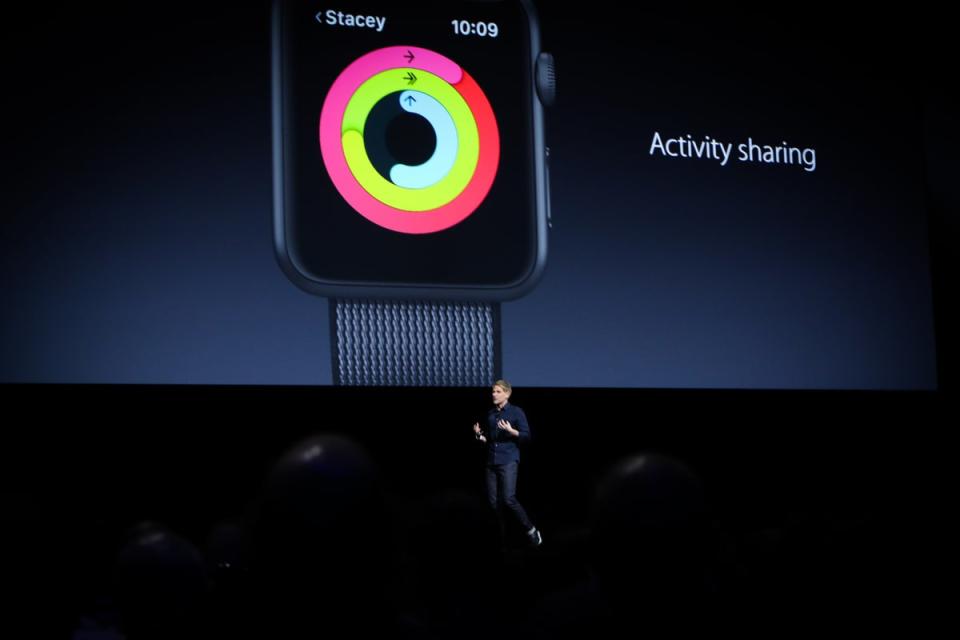Jay Blahnik wants to help you feel fit and healthy. That’s probably not particularly surprising, considering he’s Apple’s vice president of fitness technologies. But what might be a little more unexpected is that he doesn’t really care how you do it.
Whether you work out in a classroom or alone, it doesn’t matter: if you want to join people virtually, you can use Apple’s Fitness+, but if not, you can still track your workout on your Apple Watch. It doesn’t matter whether you train at home or at the gym: the Fitness+ streaming service contains classes designed to be followed in both. He doesn’t even mind if you find yourself ready to work out at another fitness service. He just wants you to train.
That spirit of positivity and inclusivity probably comes as no surprise to anyone who’s seen Blahnik at work, including at Apple events, where he’s appeared on stage to introduce new fitness technologies. It also won’t be new to anyone who’s used Fitness+, the streaming service that Blahnik helped build and which was built from the ground up to be as welcoming as possible.


“The launch of Fitness+, more than three years ago, was completely rooted in one simple idea. That North Star was: Can we create the most welcoming and inclusive fitness service in the world? Everything we do is built around that idea,” he says The independent.
In addition to Fitness+, Blahnik’s team powers the Activity app on the iPhone and the Workout app on the Apple Watch, as well as other fitness technologies built into both products. One of the guiding principles in building this is to build “great features that meet people where they are at, and then also inspire them to build healthy habits.” It’s about “really making sure that everything we do is welcome and inspiring,” he says; “In terms of health and fitness, it can be very intimidating for people.
That starts with encouraging people to become a little more active than they are now: the ‘exercise’ goal in the Apple Watch measures everything, even a brisk walk, and can therefore encourage people to simply move a little more. A few years ago, Apple launched the Watch Ultra, for the completely different end of the spectrum: it was built for “ocean explorers and people who really want to push the boundaries even further,” and came with the biggest redesign of the Workout app since launch , partly to draw attention to these groundbreaking exercises.


That spectrum may not be as clear as it seems. We associate the idea of the beginner with someone who might be trying to get active, but it is also those who want to start something different: runners who want to start yoga for example, or hardcore spin fans who want to take care of their body as well as their mental well-being through mindfulness.
There is, of course, a danger in being too expansive; you run the risk of offering something for everyone, but everything for no one. Fitness+ is now huge – the largest library of ultra-high-definition health and fitness content in the world, says Blahnik – which means it’s easy to be spoiled for choice. How does Apple ensure that the service remains coherent and cohesive even with such a wide range of options?
“We have always said that it should be very easy to get where you need to go.” For example, he points to the filter system, which allows people to quickly narrow down the number of options: you can choose a duration, a pace, an instructor and much more to quickly get rid of anything you don’t want. “Once you know what you want, the filter makes it very easy to narrow down the library.”
“But if you’re new, we’re constantly working with the service’s editors to make sure the most interesting stuff ends up on the right shelves for you at that moment,” he says. “Giving you more of what you do; giving you the chance to try something new that counterbalances what you’ve already done. Apple tries to highlight current moments that might be particularly interesting: he points out the recent walk with Bernice King, Martin Luther King’s daughter, which was launched for Black History Month, and Apple also introduces some new videos with Joe Wicks.
“We are constantly adding both the human and digital touches,” he says. And you’ll continue to see that a key theme for us is keeping it personal as it gets even bigger so that it’s very easy to open it up and feel like you see yourself in the service and you can do that . find what you need.”
Fitness+ launched in December 2020, at a time when people were both working and exercising from home. It seemed like perfect timing, but it was more luck than choice: “Building something like this takes over ten months – we’ve been working on it for years,” says Blahnik. Apple already tried to ensure that Fitness+ was not just for home workouts, but that it could be used anytime, anywhere.
“We really wanted to go beyond just home fitness. We felt strongly that the service should complement what you do at the gym or on the road. We always had all those things in mind.” A third of the training sessions use equipment that most people do not have at home, such as treadmills, rowing machines, bicycles.


That also meant that when the world emerged from the pandemic, the service was ready to “complement you where you are,” Blahnik says. “If you’re a beginner, you might be too intimidated to go to the gym, for example, so you might do the whole experience at home. But often you graduate and suddenly feel stronger and fitter. And maybe you’ll decide to join the gym – and we’d love to join you on that journey.”
What if you want to take that journey one step further? For example, what if you started with Fitness+, but find yourself wanting something more structured, like the graphs and numbers of more dedicated cycling apps? Blahnik won’t stop you.
“We’ll obviously continue to push our features in both the watch and Fitness+,” he says. “But if someone is ready to graduate to something he or she finds more motivating, we’re really just glad we could be there on the journey.”
He points to the wide variety of fitness and mindfulness experiences offered in the App Store, for example. And he notes that Apple just announced it’s working with Joe Wicks to film some new content for Fitness+, but he’ll continue to run his own app and appear on YouTube.
“I think we just really want people to see that there is hardware, software and services that can help them get healthy,” he says. “And we’re certainly building experiences that we think can really improve things for people. But we’re not really focused on whether or not they’ll choose something else – we think that’s just great because it raises the tides for everyone.
If people do switch to other services, “we all benefit,” he says. “So from that perspective, we don’t spend a lot of time on it. Even Fitness+ are incredibly welcoming, but we may not be for everyone. There may be someone who is very excited about another experience he or she is using. So we work very hard to make sure our hardware is compatible,” he says, pointing out that Apple’s GymKit platform allows Apple Watches to use fitness equipment and exchange data.
“Very early on we wanted to say: we’re going to build these activity experiences, training experiences and mindfulness experiences. We didn’t know in advance that we were going to do a service. But when we added that, we always said, let’s make the Watch feel like a device where you can be recognized for everything you do, wherever you do it.
“We know we can’t be everything to everyone, but we will try very hard to invite as many people as possible. And if you want something different, we just want to be there to make sure it amplifies it.”
Lately, Apple has been focusing on mental wellness as well as physical wellness. That included mental health features like the Journal app and the option to track someone’s mood. But it also meant that Fitness+ had to offer similar options, including guided meditations in different formats.
But so often, people will use at least some of those mindful moments to take a break from their devices. Is there a danger that we may try to escape stress using the very same means that brought us to it in the first place?
Blahnik points to features like Screen Time, which make it easy to track how much you use a device and provide ways to improve habits. Others may not be so obvious: for example, the Apple Watch will alert you every hour if the owner hasn’t gotten up, and that can be a useful opportunity to take a break both mentally and physically.
We are speaking just before the launch of the Vision Pro, Apple’s new headset; a technology so personal that it is literally attached to your face. Is it also a fitness technology?
Blahnik starts by expressing his appreciation for the product: it’s “incredibly immersive,” he says, and features “the most advanced technology we’ve ever put into a hardware product.” But his team also worked specifically on the mindfulness app built into the hardware.
That was part of the demos that Apple showed to the press last year. In it, extended petals, as known from the Mindfulness app of Apple Watch, take over the screen, and users can go through a guided meditation led by Jessica and Christian, trainers from Fitness+. (When Good Morning America host Robin Roberts tried this out last summer, she seemed visibly moved: “I’m a meditator, and in that moment I found something new,” she said.)
“What I love about it being so immersive – spatial computing at its best – is that for many people, the challenging part of meditation and mindfulness takes time away from distractions. And what you’ll see in the experience is the way it’s put together, it really gives you something to focus on.”
Is that where Vision Pro’s fitness use ends? For example, it’s easy to imagine yourself training in virtual spaces, although that might be a bit difficult given the weight of the headset.
“I guess I would say we’re super excited to see what’s next. Because we think there are many opportunities for great health and possibly fitness experiences. And we will always do what we think makes sense for the products we design.”